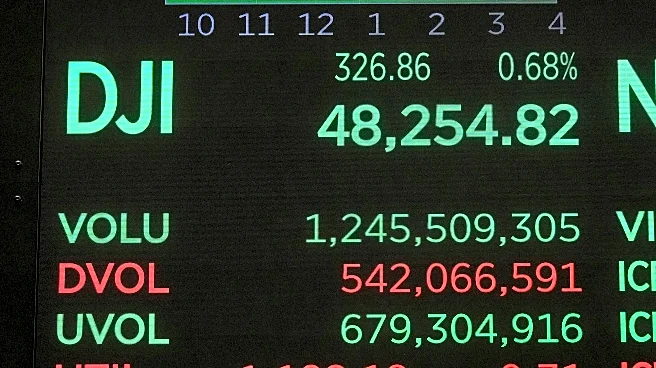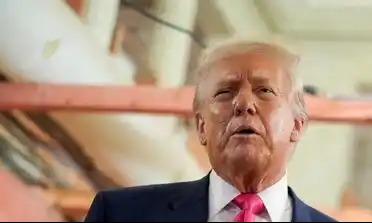What's Happening?
The U.S. dollar experienced a decline following the reopening of the government after its longest shutdown in history. The shutdown had significant impacts, including disruptions in air traffic, cuts to food
assistance for low-income Americans, and over a million workers going unpaid. The reopening has left traders uncertain about the long-term effects on trust in the U.S. currency. The Federal Reserve's policy trajectory remains unclear, with mixed signals from its officials regarding interest rates. The dollar index fell by 0.35%, with the euro and yen showing gains against the greenback. European officials are considering pooling dollars to reduce reliance on the Federal Reserve, reflecting concerns over U.S. policies under President Trump.
Why It's Important?
The reopening of the U.S. government and the subsequent dollar decline highlight the fragility of economic confidence in the face of political instability. The shutdown's impact on essential services and workers underscores the potential for significant economic disruption. The Federal Reserve's cautious stance on interest rates reflects broader concerns about inflation and economic stability. The consideration by European officials to pool dollars indicates a shift in global financial dynamics, potentially reducing U.S. influence. This development could have long-term implications for international monetary policy and the global economy.
What's Next?
The Federal Reserve's upcoming decisions on interest rates will be closely watched, as they could influence the dollar's trajectory. Traders and policymakers will monitor economic data releases to assess the shutdown's impact on the economy. European discussions on reducing reliance on the Federal Reserve may lead to new financial arrangements, potentially altering global economic relationships. The U.S. government will need to address the underlying issues that led to the shutdown to restore confidence in its fiscal management.













